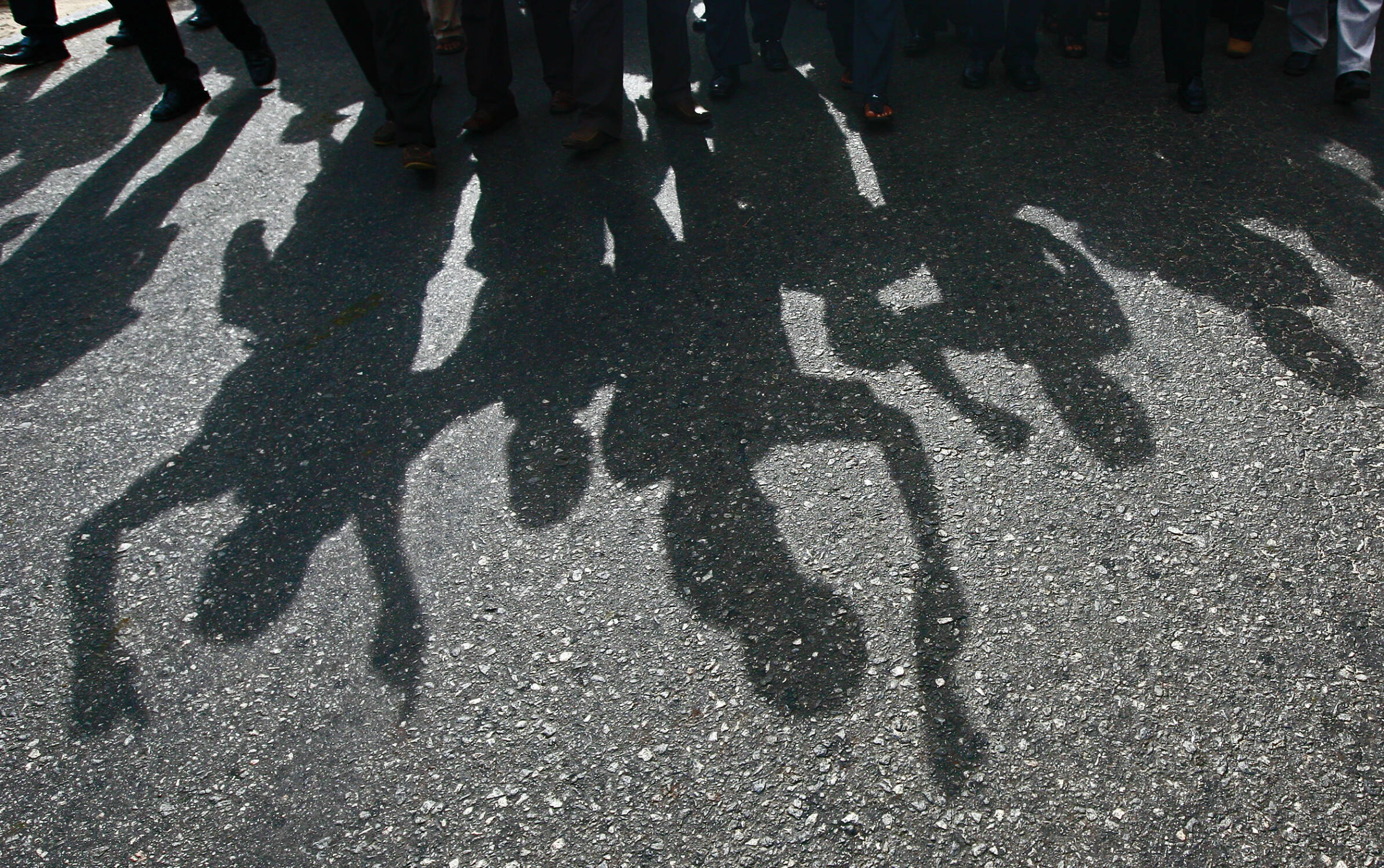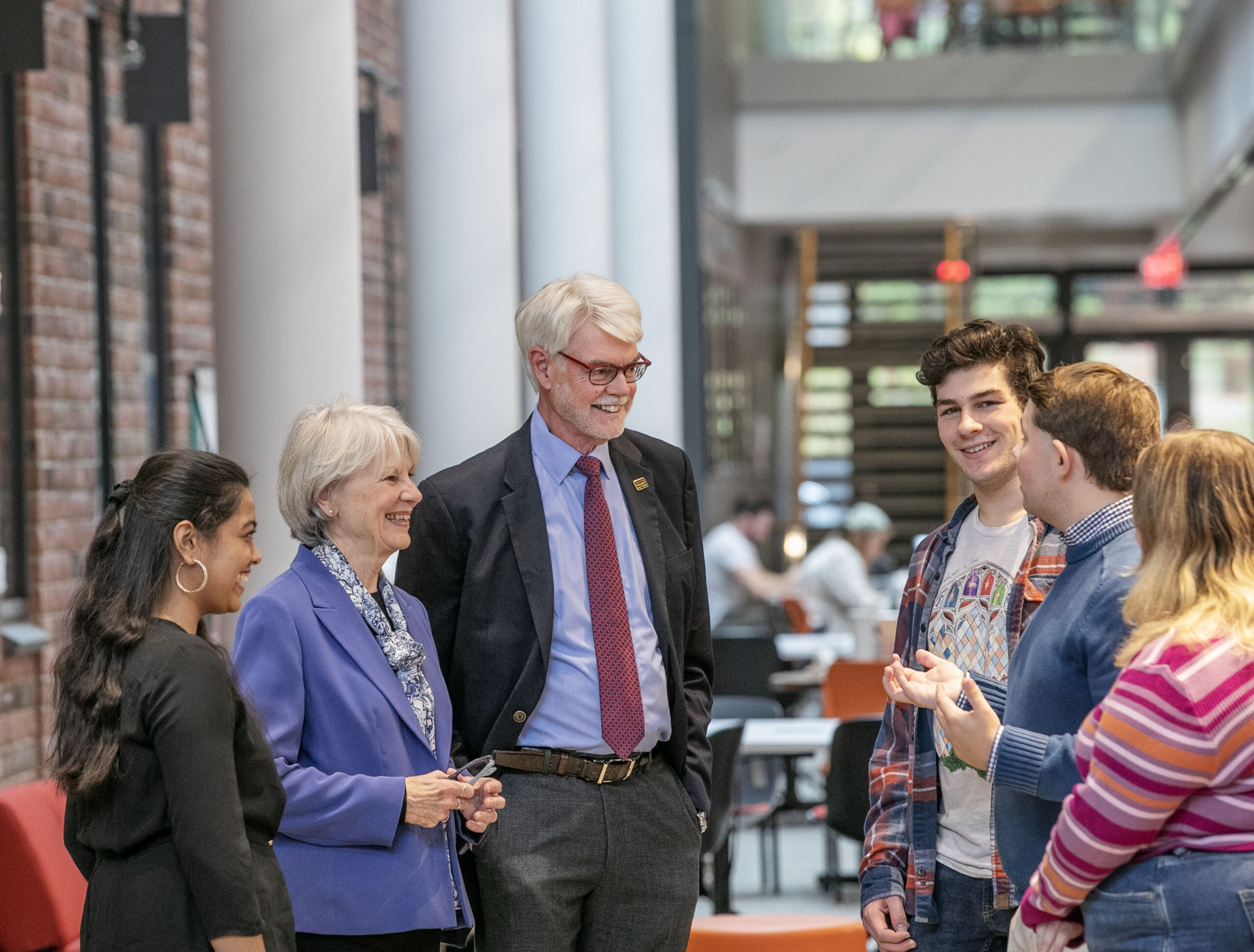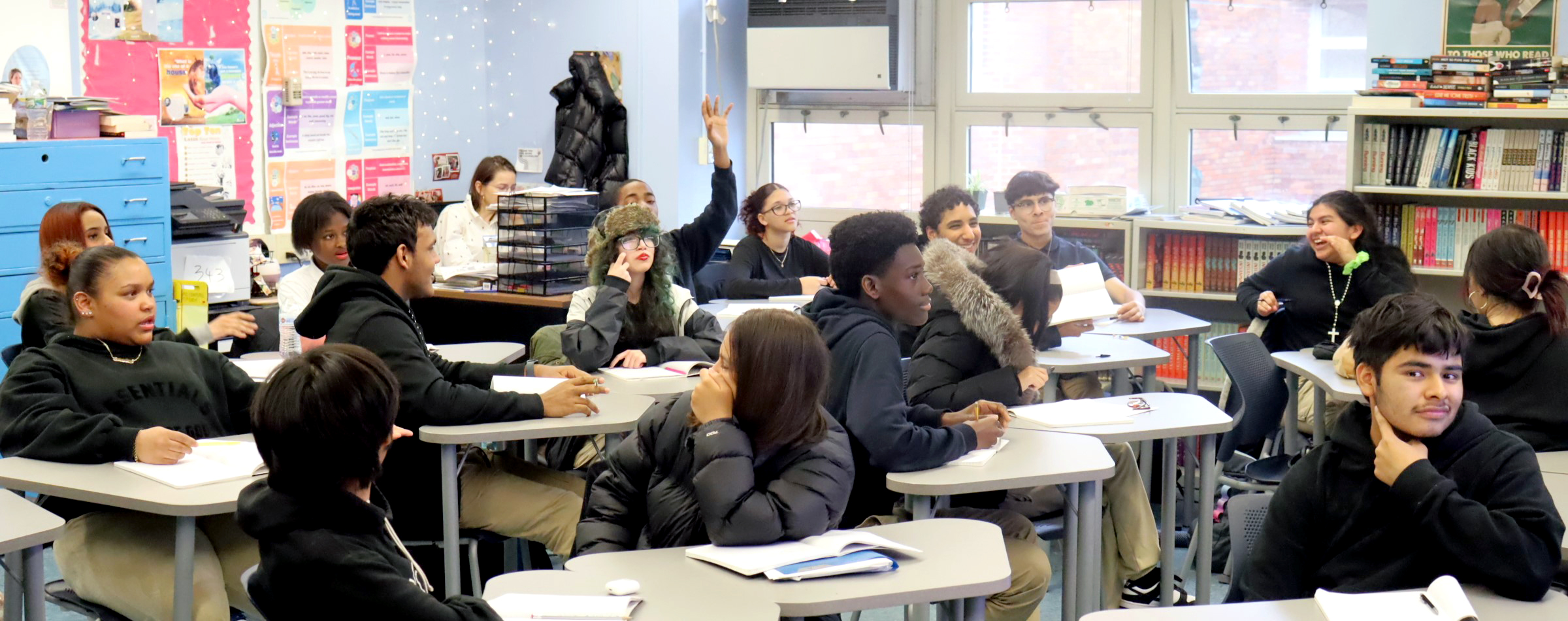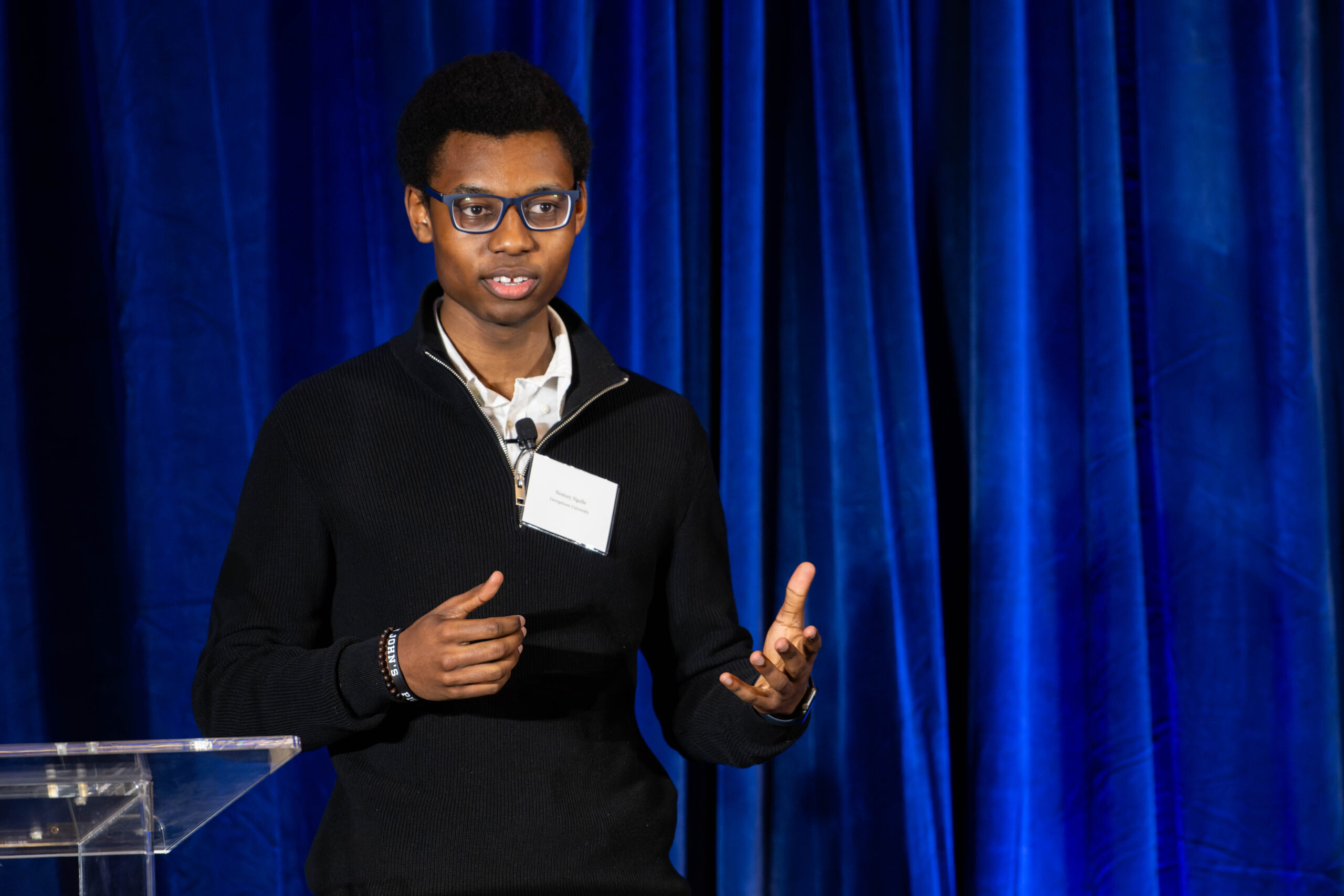In a 2022 study published in the Journal of Sorority and Fraternity Life Research and Practice, sorority- and fraternity-affiliated college students reported higher positive mental health and lower rates of anxiety and depression. While the analysis indicates the need for further research to fully understand this disparity, it is reasonable to observe that fraternities and sororities offer members several key requisites for wellbeing: a sense of belonging, purpose, identity development, and social support.
The study’s findings are promising and highlight the Greek system’s potential to build positive outcomes for students, alumni, and institutions. But most fraternities and sororities do not open their doors to all students. Many have rigorous recruitment protocols that make pledges compete for limited spots in the most elite organizations. Dangerous hazing rituals, substance use and sexual assault have damaged Greek life’s reputation, which obviates its many benefits. So how can colleges and universities keep the good and discourage the bad when it comes to sororities and fraternities? A look at the systems’ storied history suggests that its expansion into culturally-based organizations may be Greek life’s redemption.
If Greek organizations cultivate a sense of community and belonging for members, they also dictate who is afforded the social capital of belonging. That social capital and its lifelong reverberations are staggering: 40 of 47 male U.S. Supreme Court Justices since 1910 have been fraternity men, as well as 85 percent of Fortune 500 executives and 76 percent of all Congressmen and senators. It is clear sororities and fraternities offer a range of benefits, including community, networking opportunities, leadership development, social events, and philanthropy. But Greek affiliation does come with a number of drawbacks. Joining a sorority or fraternity costs money in the form of membership dues, event fees, and other expenses, which can exacerbate their exclusivity and may be prohibitive for some students. Critics of Greek life argue that sororities and fraternities can perpetuate social exclusivity, social conformity, and elitism, creating divisions within the campus community. That elitism may even be a contributing factor to positive mental health among members: the 2022 Journal of Sorority and Fraternity Life Research and Practice study notes that “The social class that exists within fraternity and sorority communities is built on social capital that may indicate that the positive mental health experiences of fraternity and sorority members could stem from a community of students who come from more privileged backgrounds.”
A culture of elitism and antiquated gender norms dominates the most public depictions of Greek life, from 1978’s Animal House to TikTok’s “Bama Rush.” But the preppy, chauvinistic, boozy side of sorority and fraternity life is not the whole picture. Since the mid- to late-twentieth century, culturally-based organizations have emerged as sites of belonging and social development for students historically excluded from or underrepresented within predominantly white sororities and fraternities.
If Greek organizations cultivate a sense of community and belonging for members, they also dictate who is afforded the social capital of belonging.
Dr. Crystal Garcia is an associate professor in the College of Education and Human Sciences at the University of Nebraska-Lincoln. Her research includes critical analysis of culturally-based sororities and fraternities and anti-racist practice in sorority and fraternity life. Garcia says she looks at sororities and fraternities as “microcosms of the greater university.” As an undergraduate student at Texas A&M University-Commerce, Garcia joined a historically white sorority and was an active presence in sorority life on her campus, even being awarded Greek Woman of the Year. As she progressed in her studies and began conducting research on higher education, Garcia found herself questioning why she, as an involved member and leader of her undergraduate institution’s Panhellenic community, never knew about the culturally-based organizations on her campus. That realization prompted a career of academic inquiry into culturally-based sororities and fraternities and the experiences of minoritized college students within those groups.
As an ethnographic researcher, Garcia is interested in the role of “narratives, storytelling, and the power of individual voices and perspectives” to bring light to lived experiences within environmental and cultural contexts and “the ways that power, privilege, and oppression take effect” in student organizations. “At predominantly white institutions, culturally-based sororities and fraternities can provide a space where students’ voices are affirmed, often for the first time within their campus communities,” she says. Garcia also notes that the support systems embedded in culturally-based sororities and fraternities help students persist to graduation by cultivating social, academic, and personal development, all of which contribute to positive mental health and wellbeing.
The process of joining a culturally-based sorority or fraternity looks completely different from the rush process of historically white organizations, Garcia explains. The Panhellenic recruitment process is formalized, receiving attention and support from the university, while culturally-based organizations typically do not receive the same institutional or financial support.
Garcia has worked alongside Dr. Antonio Duran, a professor of education at Arizona State University, to examine minoritized students’ experiences in campus life. Anti-racist practice in the context of sorority and fraternity life, Garcia says, means “taking intentional steps to recognize historical and contemporary ways that race and racism play a role in our society — and, in turn, in the organizations that we’re a part of.” Garcia urges all student organizations, Panhellenic or otherwise, to think deeply about their practices of recruitment, the events they host, and their membership criteria, interrogating places where race and racism may be embedded into the organizational culture. “The purpose of sororities and fraternities is to foster community and connection,” she says, “and we can’t do that if we are harming our members.”
“At predominantly white institutions, culturally-based sororities and fraternities can provide a space where students’ voices are affirmed, often for the first time within their campus communities.”
Sexual violence is more prevalent among Greek-affiliated students than their non-affiliated peers, with both fraternity men and sorority women reporting higher incidence of sexual assault compared to non-members of the same gender. “For historically white sororities and fraternities, the issue of sexual assault is particularly salient, given that we have created a culture where sorority members are essentially dependent on fraternities for spaces to consume alcohol, since they are usually not permitted to do so within their own houses,” Garcia says. In culturally-based sororities and fraternities, those structures tend to look quite different.
Often, these organizations do not have formalized housing designated to their members. “Whereas historically white sororities and fraternities were able to purchase land and build homes — more than a century ago in some cases — culturally-based organizations largely did not have those opportunities,” Garcia says, adding that by the time cultural sororities and fraternities had opportunities to purchase homes or land, the price tag made doing so virtually impossible. The conditions that led to the prevalence of binge drinking and predatory sexual behavior in historically white Greek organizations were largely absent from the making of culturally-based ones; however, Garcia adds, no student organization is without flaw, and those harmful behaviors can and do exist in every area of campus life.
Dr. Robin Zape-tah-hol-ah Minthorn is a professor and chair of the Educational Leadership and Policy Studies Department at the University of Oklahoma. A citizen of the Kiowa tribe of Oklahoma and a descendant of the Umatilla, Nez Perce, Apache, and Assiniboine Nations, Minthorn co-founded the University of Oklahoma’s first Native American sorority, Gamma Delta Pi, Inc., as an undergraduate in 2001. “We didn’t have a sorority that honored our culture and our ways of being,” Minthorn says. “We did some research on another Native American sorority, Alpha Pi Omega, Inc., which was founded in North Carolina. The tribes are different in North Carolina than they are here, and the tribal composition of our founders was different. We decided to create our own sorority that represented our tribal community and culture.” Students were receptive to the new sorority, Minthorn says, reflecting the need for a cultural space dedicated to belonging and connection among Native American college students. In the decades since its founding, over 300 Native women have joined Gamma Delta Pi. “The impact extends beyond our undergraduate years and into our professional lives,” Minthorn says, “because we develop a lifelong bond of sisterhood that we carry throughout our lives.”
Historically Native American fraternities and sororities (HNAFS) like Gamma Delta Pi have the potential to transform student lives and foster whole-person wellbeing. “We have always been intentional about connecting to the local tribal communities,” Minthorn says, noting that civic and community engagement provides cultural connection on and off campus. Gamma Delta Pi’s philanthropy has previously included organizations working to support Native women experiencing domestic violence and addressing Sudden Infant Death Syndrome (SIDS) in Native American communities. Today, their philanthropic work focuses on missing and murdered Indigenous people. “That visibility helps our sisters feel seen, both collectively and as individuals.”
For the twentieth anniversary of Gamma Delta Pi’s founding, Minthorn and her sister/colleague Dr. Natalie Youngbull and doctoral students James Wagnon and Amber Silverhorn-Wolfe conducted talking circles with sorority members, as well as interviews with the Elders who serve as advisors of the sisterhood. The founding chapter at the University of Oklahoma has had the same advisors since its founding in 2001, an uncommon occurrence in sorority and fraternity life that speaks to Gamma Delta Pi’s dedication to “fostering intergenerational connection.” Minthorn and her colleagues also collaborated with Phi Sigma Nu, the nation’s oldest and largest Native American fraternity, and Iota Gamma, Inc., a Native American fraternity founded at the University of Oklahoma, to conduct research into the impact of HNAFS on students and communities. Minthorn says their survey data found that “members’ involvement in HNAFS fostered not just leadership, but whole personhood. They create a space of belonging where Native men and women can explore what Indigeneity looks like in sorority and fraternity life and develop a sense of culture on campus — which is, for us, often missing.”
Culturally-based sororities and fraternities, such as National Pan-Hellenic Council (NPHC) organizations, were created in response to discriminatory practices at a societal level, including exclusionary clauses that barred students of color from belonging in historically white Greek organizations. “They were founded on the principle of access and supporting students who were denied support from the larger institution,” Garcia says. “They have long histories of leading activism efforts, including during the Civil Rights Movement.”
Garcia says she hopes that today’s students will continue to call upon those histories as they push for inclusivity at their institutions. In order for all students to thrive in their colleges and universities, she says, “Culturally-based sororities and fraternities have to be resourced to ensure that students within them can enjoy their experience. Often, our research finds that these organizations don’t receive the same level of institutional support in terms of personnel; they certainly don’t always have the same financial resources; they simply don’t have the same alumni networks that predominantly white organizations often have.”
“HNAFS create a space of belonging where Native men and women can explore what Indigeneity looks like in sorority and fraternity life and develop a sense of culture on campus — which is, for us, often missing.”
Additionally, she warns that ongoing legislative efforts to undermine diversity, equity, and inclusion (DEI) programs in some states may compound the problems of under-resourcing. “Sometimes, culturally-based sororities and fraternities are not housed within a ‘Greek Life’ or ‘Fraternity and Sorority Life’ office,” she explains. “Often, they are designated within a cultural center or an office of diversity and inclusion. In states that have banned those offices, I am very concerned that these organizations will be further harmed and left with even fewer resources, losing the support systems they have in place.”
To Pledge or Not to Pledge
Advocates for banning sororities and fraternities often point to Panhellenic organizations’ history of hazing, substance abuse, discrimination, sexual assault, and academic neglect. Daniel R. Schwarz, a professor of English Literature and Presidential Fellow at Cornell University, wrote in a 2022 op-ed for Inside Higher Ed that Greek life is “an antiquated, sexist, classist, elitist, discriminatory system” that “contributes to long-lasting physical and emotional injuries.” Schwarz echoes some sentiments from Association of American Medical Colleges (AAMC) CEO David J. Skorton in a 2011 op-ed for the New York Times.
Despite efforts to eradicate hazing, incidents still occur, leading to injuries and even deaths. Additionally, as Schwarz highlights in his evaluation, Greek organizations continue to be criticized for perpetuating discrimination based on factors such as race, ethnicity, gender, and socioeconomic status. This can contribute to a campus culture that fosters inequality and marginalization. Excessive partying and alcohol-related incidents are more common on campuses with active Greek communities. And, because sororities and fraternities are often perceived negatively in the public forum, the media attention they receive reinforces stereotypes about privileged, elitist, and irresponsible behavior. These stereotypes can harm the reputation of both individual members and the institutions they represent, though they tend to ignore the existence of culturally-based sororities and fraternities altogether.
It is crucial to recognize that not all sororities and fraternities embody these negative qualities, and many members find valuable social development, leadership opportunities, and lifelong friendships within them. Some argue that instead of banning Greek life altogether, efforts should focus on reforming and regulating these organizations to address their shortcomings while preserving their positive contributions to campus life — and, importantly, universities’ financial incentives to keep them.
For those who get to belong, sororities and fraternities can be a ticket to flourishing on campus and in post-graduate life. Alumni networks, job placement services, and mentorship programs can set members up for career success. Philanthropy encourages nurture civic engagement and finding meaning beyond oneself. But perhaps the most enduring benefit of sorority and fraternity affiliation is the opportunity to form lasting friendships that extend past college and, Garcia says, serve as a “place of joy.” In a system that still shows signs of its troubled past, culturally-based Greek organizations are making joy a place for everyone.







